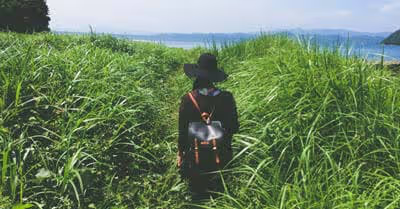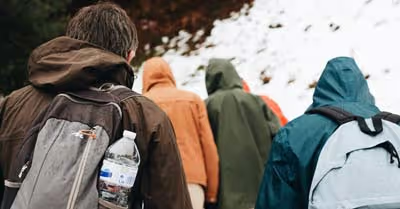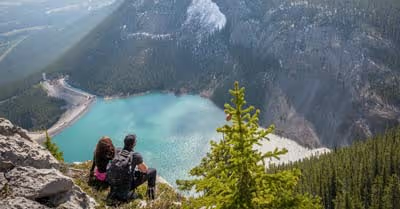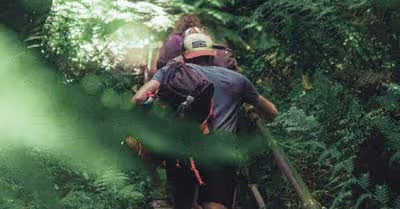Table of Contents
Short few hour hikes:
During a short hike, you arent going to be needing much at all. Probably just a couple of 18oz water bottles, a small first aid kit, and compass/map. These are the core of what you need to bring. Everything else is just situational. For example, whether or not you need a raincoat can be determined by checking a weather forecast. You probably won’t need any spare clothes, nor will you need to bring a lot of food most likely. Perhaps a few granola bars, an apple, and maybe a candy bar. Carrying too much kit on a short hike isn’t exactly a problem, it is just unnecessary work. A small, 30L, backpack is more than enough for this.
One day hike:
A one day hike is very similar to just hiking for a couple of hours. You can largely predict what you will need to bring by checking the weather forecast and by studying the route. It is probably fine to get away with packing light for a one day hike. You will still need a compass and map, a small first aid kit, and water. Throughout a one day hike though, you will need much more water. Probably between 0.5-1 gallon of water a day. And maybe a sports drink to keep your electrolyte levels up. You will also probably need a spare shirt, and depending on the weather a spare jacket. Although you can use the weather forecast as a guide, it is still best to trust your gut and pack a thin raincoat.
Over a full days hike, you are much more susceptible to sunburn so bringing some kind of sunblock/sun lotion is a good idea. This means bringing a hat regardless of the weather when you set off is a good idea. The weather can turn quickly, and you will want to be prepared for any scenario. Just like you will need more water, you will need more food. You might want to eat a proper meal on your hike, it is best to bring something like soup in a thermos to save space and to eliminate packaging.
A one day hike probably requires a 50l backpack at most. You may even still get away with a 30l one, a lot depends on the weather and how many extra layers you need to bring. It is better to be safe than sorry on a longer hike, as you may end up getting rained on early on and walking for the next 6 hours soaked through. Conversely, bringing too much for just a one day hike can be very tiring carrying all that extra gear. Learning how to be an efficient packer is a skill, one that must be learned over time through trial and error.
Multi-day hike:
A multi-day hike will require all the basics as mentioned above. But now you need to bring multiple times the amount of food and water. Bringing 3 days’ worth of ready-made food is probably your best bet. It is still a short enough trip that your food will keep, without having to bring cooking equipment. High in carbohydrate foods that can be pre-cooked like rice and pasta are great, you can bring them in Tupperware that makes them easy to pack and means you leave no litter. You will want to bring more water, more sports drinks, and you will need a refillable water canteen to collect more water on the trail. Carrying the 2-3 gallons of water you would need is going to be very heavy. That’s about 20-25 pounds you will be lugging around just in water.
You will also need to fit sleeping gear, and multiple days worth of clothes if you plan to change. Carrying multiple days’ worth of clothes is not heavy, but does take up a fair bit of room. A 70L pack is more than enough to fit all of the extra items.
Week-long hike:
A week-long hike is similar to that of a multi-day one. The main differences are mostly quantity and practicality. You will need to bring more water and much more food. The chances are that you won’t be able to preprepare a week’s worth of food. Without refrigeration, your food will start to spoil towards the end of the week. This means bringing long life food that can be prepared on the trail is going to be necessary. To prepare it you will need to bring pots and or pans. And maybe a small gas stove, otherwise you will at least need the items to start a fire. You will also need to keep in mind it is best to have a sat phone over such a long journey.
Because of the length of your hike, the possibility of overpacking is pretty slim. You will need to bring clothes for different weather, spare socks, and other undergarments, and lots of layers if its winter. You don’t want to have to fully unpack, and then repack, every time you need something so you need as big of a backpack as you can manage. At the very minimum your backpack needs to be 80L, but most likely more.
Conclusion
Knowing which size backpack to bring can be hard, each size is better suited to different length hikes. If you use this article as a general guideline you won’t go far wrong. Mostly, it is now just common sense which one will be the right size for you. It is always better to have a bigger backpack than you need with some spare room than one that is far too small and will lead to you making sacrifices of what you can and can’t bring. You should also remember that you won’t be able to repack your backpack as well as you did before you set off. So leaving a small amount of room in your pack before leaving will make your life far easier.
Recent Articles
















